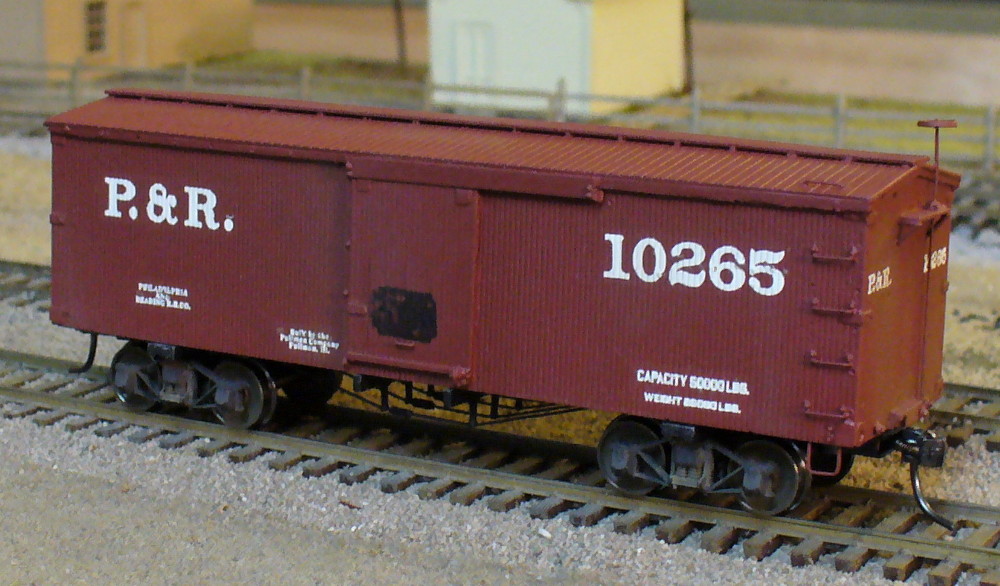Philadelphia and Reading Boxcar from a Canfield and McGlone Kit

The Kit
In their series of resin kits, John Canfield and Bob McGlone offered this kit of an 1890's Reading boxcar on a limited run basis. They advertise new kits on the EarlyRail Yahoo group forum, and they are usually spoken for within a very few days. They have released a second run in only one case, their Tiffany reefer.
Construction
As usual, kit instructions are very detailed and I generally followed them. There can be issues with bubbles, incomplete nut-bolt-weasher castings, and irregular rooflines. This kit represents an improvement over past releases. In particular, I was pleased that the roofline was straight rather than exhibiting a mid-car sag. (I have noticed this issue with other resin manufacturer's kits, and I suspect it has to do with the challenge of keeping distortions out of the mold during casting.) Nevertheless, I did have to repair some missing places with filler.
Modifications
I found the roofwalk castings too thick to my eye, so I replaced the castings supplied with new roofwalks made from an appropriate thickness of styrene, three boards across.
Kit instructions include several photos of prototype cars, including one that looks like an as-built car or an early version. Information I've seen suggests that much of what we know about this car is based on photos from years after they were built, after modifications and repairs. The apparently early version has only four grabirons on each side and none on the end. I scraped off the bumps representing the grabirons and added my own nut-bolt-washer castings and grabs. The observer can see the faint holes where the original grabs were intended, but you have to look to see them.
I did all this because the prototype was actually built about four years after the date I model, but I wanted to build one of these models and decided building the kit to represent as early a car as possible in this series was a reasonable compromise.
Paint and Lettering
I used Floquil Oxide Red, consistent with the suggested color in the instructions.
Decals came with the kit, although I had some trouble with the black panels on the doors, as you can see from the photo. For some reason, the color was very fugitive.
Kitbashing Potential
Most of us need only so many Reading boxcars, so I wondered how easily this model could be modified to match another prototype. I would rank the potential limited to moderate. Unlike wood kits, resin kits are hard to modify very much and this car is no exception. On the other hand, it's a fairly generic-looking boxcar with dimensions similar to basic 34ft boxcars of the 1880s to 1890s. It's easy to scrape off some details as I did and place grabs in a different place.
Summary
I enjoyed building this car, even more than the Tiffany reefers I'd done the year before. It builds into a nice-looking model. I intend to buy future models from these guys for cars that fit my period and northeastern locale.